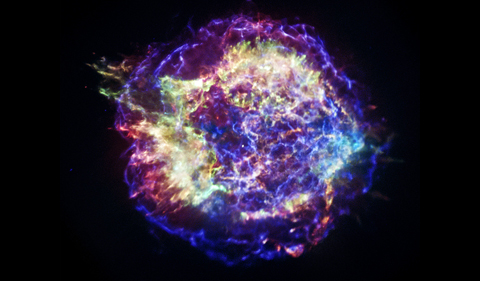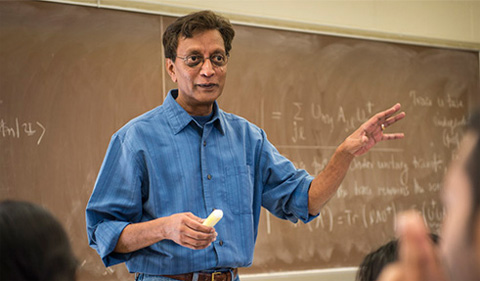
The Cassiopeia A supernova remnant is one of the most famous objects studied by astronomers. It harbors the youngest known neutron star. Image: NASA/CXC/SAO
By Jean Andrews
Physics & Astronomy
Researchers from around the world interested in deep space phenomena convene at Ohio University in May.
More than 80 scientists from 12 countries and 14 U.S. states will address topics such as: How are neutron stars born? Are elements heavier than iron, such as gold, made in the debris of collisions involving neutron stars? What do we learn by studying the gravitational waves emitted in such collisions?
“Scientists study detailed features of atomic nuclei and ways to connect them with observations of stars and stellar explosions to understand the origin and evolution of matter,” says Dr. Madappa Prakash, Professor of Physics & Astronomy and the events’ organizer.
The Sunday workshop “Experiments for X-ray Burst Nucleosynthesis” is followed by a five-day symposium “JINA-CEE 2016 International Symposium on Neutron Stars in the Multi-Messenger Era: Prospects and Challenges.” Both events take place in Walter Hall 245. Capacity permitting, both events are open to the public although the proceedings are highly technical.
The workshop bring theorists and observers together to foster collaborations, share resources, and discuss new experimental initiatives aimed at improving our understanding of X-ray bursts. Associated with neutron stars, X-ray bursts are characterized by occasional and some times periodic emission of short, very powerful bursts of X-rays.
The symposium aims to synergize the expertise of physicists and astronomers to assess the current state of knowledge about neutron stars, and to identify areas in which more work is needed to enable interpretation and extraction of information from astronomical observations.
The events are hosted by Ohio University’s Institute of Nuclear and Particle Physics (INPP) and the Physics & Astronomy Department. Further support is provided by the Office for Research & Creative Activity and the College of Arts & Sciences.
Co-sponsors are the INPP and the Joint Institute for Nuclear Astrophysics – Center for the Evolution of the Elements, or JINA-CEE, and JINA-CEE members of Michigan State University and the University of Notre Dame.
JINA-CEE is a Physics Frontier Center which is funded by the US National Science Foundation. The center encourages research addressing fundamental questions about the evolution and properties of matter in the cosmos, and the origin of the chemical elements that make up our world.
For further information, contact the organizer Dr. Madappa Prakash, prakash@ohio.edu or 740-593-1716.


















Comments